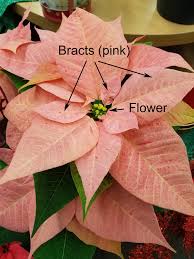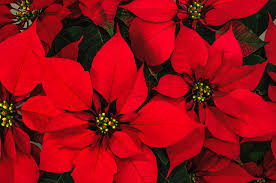What a different lead into summer! Cool showery weather is cause to rejoice! Yet many of us are still traumatised by last year’s drought and bushfires. So we are cautiously celebrating la Nina as we move closer towards the celebratory season.

Although the year 2020 has been a rollercoaster and this year’s Christmas will be a little different to previous years; it seems that some things haven’t changed, one of them being for the love of the good ol’ Chrissy Poinsettia.
You’ll start to see them in nurseries, gift shops and supermarkets. It’s always a timely reminder that Santa will be on his way soon.
One of the most common questions we get at the nursery after chatting about all this gorgeous rain are usually about poinsettia and how to look after them and keep them cheery for Christmas and beyond. So I’ve written down a few of my thoughts here and some interesting things that I’ve learned about them in my time at the nursery that may be of some interest.
There is nothing finer than the sight of a poinsettia blooming naturally. The hot red colour of its bracts never fail to liven and its famous red and green foliage has become an important part of Christmas tradition. But did you know that in Australia the poinsettia is artificially coaxed into its flamboyant floral displays for Christmas, preferring to flower in the winter months!
The red pigmentation of the bracts is triggered by the shorter periods of sunlight that the plant experiences during the winter months. If you would like to make your poinsettia flower at Christmas, this is actually quite easy to do. Plants grown in tubs or pots can be moved indoors by mid-November to produce their trademark red and green foliage in time for Christmas festivities. A similar result can be achieved with plants grown in the garden by covering them with a large blanket. Try it and see!
What we see as the ‘flowers’ of the poinsettia are actually ‘bracts’ or clusters of coloured leaves — the real flowers are insignificant and found in the centre of each of these clusters.

Poinsettia care begins with proper light, water, and temperature conditions. During the holidays, while in full bloom, they typically enjoy semi-cool, humid locations in bright, indirect light with plenty of moisture. Poinsettia plants should be watered thoroughly, taking care not to drown them by ensuring adequate drainage is available. Likewise, avoid letting them sit in water-filled saucers, which can lead to root rot.
Adding plants nearby can help increase humidity levels in dry rooms, as will humidifiers. Once flower bracts have fallen, you have the option of discarding the plant or keeping it an additional year. For those choosing to continue with poinsettia care, decrease regular watering to allow the plant to dry out some. However, don’t let it dry out completely.
Give poinsettias a good pruning after they finish flowering. This will encourage larger flowers and more compact growth. A rather leggy-looking small tree in its natural state with regular pruning will keep it bushy. Beware that it will ooze a white, sticky sap when injured which can cause an allergic reaction in many people, so use gloves and wash hands after pruning.
And that’s about all the care they need when looking after them this Christmas and the following years.
But for this year especially the team and I would like to wish everybody a safe and happy holiday and thank everybody for there continued support.
Merry Christmas!
Caitlin
Wingham Nursery & Florist
02 65534570
